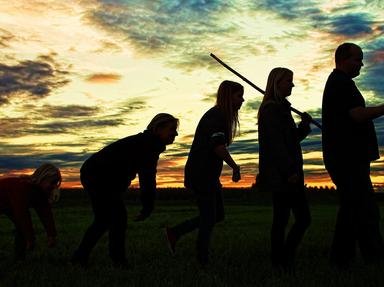Quiz Answer Key and Fun Facts
1. What is a transitional fossil?
2. How do transitional fossils best serve as evidence for evolution?
3. Creationists often criticize transitional fossils by stating that there is no proof that a given fossil is the ancestor of a given species. What is one thing that is wrong with such criticisms?
4. Evolutionists have used transitional fossil series to document that men evolved from modern-day monkeys.
5. One of the most exciting developments in evolutionary biology was the discoveries of Pakicetus and Ambulocetus. These fossils were clearly transitional forms in the evolution of what group of mammals?
6. Creationists try to dispute the very clearly documented evolution of horses, which includes a superb series of transitional fossils, by using several arguments. Which is NOT an argument that they use?
7. Creationists often criticize the fossil record because it has large gaps in it. Which is NOT a scientific reason that such gaps occur?
8. One of the most interesting transitional series is that between fish and amphibians. What surprising discovery does this series reveal?
9. The transition from reptiles to mammals is another sequence with many well-documented examples. Which is NOT a pattern documented in this fossil sequence?
10. Documentation of many stages of evolution of most of the families of modern mammals exists in transitional fossil series.
Source: Author
crisw
This quiz was reviewed by our editing team before going online.
Any errors found in FunTrivia content are routinely corrected through our feedback system.

